#has had a significant influence on parody pirate culture'
Text
Me on International Talk Like A Pirate Day, September 19th, 2006: "Yarrr, ahoy matey!"
Me on International Talk Like A Pirate Day, September 19th, 2022: "When a king brands us pirates, he doesn't mean to make us adversaries. He doesn't mean to make us criminals. He means to make us monsters."
#black sails#when the wikipedia article says#'The association of pirates with peglegs parrots and treasure maps#popularized in Robert Louis Stevenson's novel Treasure Island (1883)#has had a significant influence on parody pirate culture'#i am fine im totally fine#🙃🙃🙃#screaming crying throwing up etc#i hate it here (affectionate)
4K notes
·
View notes
Text
Top 10 Disney Cartoon Shows
Turns out that last list didn't quite get all the Disney out of my system, so I'm at it again. Only this time, it's about Disney's efforts on the small screen.
It's actually kind of hard to overstate the significance of Disney's choice to get into the television animation game back in the 80's. Before then, whatever else one could say about its merits, animation on TV meant one thing: cheap (well, OK, that and "short films imported from a radically different era", but let's not split hairs here). That isn't to say quality animation could not be found on television pre-Disney, but rather that said quality (both in the visual and writing departments) was rarely if ever the priority. But when Disney came along, with a mission statement of bringing with it the level of craft that had defined their theatrical films (though naturally they were never really aiming that high), that changed, and animation studios of all stripes suddenly had a reason to pour a lot more effort into their animated TV shows. I don't think it's unfair to say we're still living in the world Disney helped create, in fact, whether it's the overt influence many of Disney's shows have had on the newest generation of animators or else by virtue of the space they helped to make where such shows can exist and thrive. So, with the reboot of "Ducktales", the Disney TV animation studio's first breakout success, having recently launched, I thought it would be an appropriate time to look back at that vast, storied history of Disney TV cartoons and pick out my personal picks for the best of the bunch.
As usual, there are a few provisos, a couple of quid pro quos if you will.
1.) It has to be a show made by a division of Disney Television Animation, not just airing on a Disney-owned channel. That means no Lucasfilms, no Marvel, and no imports from, say, Canada or Japan.
2.) TV shows only, no shorts or compilation shows. So much as I adore them, the current run of "Mickey Mouse" shorts will not be on here, sorry.
3.) It has to have aired in its entirety. I feel like it's unfair to judge a TV show on a list like this without being able to see it as a whole, so as intriguing as, say, "Star VS. The Forces of Evil" is, it isn't eligible since it's still producing new episodes.
With the rules established? Let's make some magic!
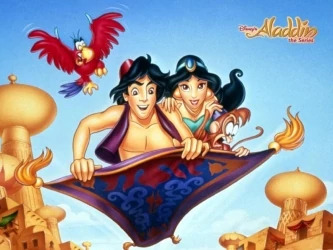
10.) Aladdin: The Series (1994-1995):
Here's a bit of irony for you: half the reason Disney ventured into television animation in the first place is that, at the time, the future of their theatrical animation division seemed in doubt. Not long after, however, along came "The Little Mermaid" and the Disney Renaissance, and suddenly it was the television side looking to the theatrical side for source material. Quite a few Renaissance pics got the TV show treatment as a result, but for my money the best of the bunch remains "Aladdin: The Series", mainly because it's the one that feels most of a piece with the original movie. Part of that, of course, is that "Aladdin" was already a bit more suited to the adventure-a-week formula, since that's kind of where the roots of the original story already run. But part of it is also that the ways in which the show expanded on the original's world were genuinely clever. Pulling not only from Arabian mythology, but Greco-Roman, Aztec, Egyptian, and beyond, the show managed to deliver remarkably-solid adventure stories, few of which ever continued from the other but all of which worked surprisingly well together to create a world that felt remarkably alive and vibrant. Sure, Aladdin himself remains a fairly uninteresting protagonist, Dan Castellanata can't hope to replace Robin Williams as The Genie, and Iago is a lot less fun when he's asked to be a constant lead presence rather than a humorous diversion. But even so, "Aladdin: The Series" succeeded at taking the original's lead, running with it, and in the process delivering a show that felt exciting and interesting to watch week from week just to see what new corner of its world it would uncover.

9.) Phineas and Ferb (2007-2015): OK, confession time? I actually don't like this show very much. I hardly dislike it or anything, but I was never able to really get into it the same way I could other entries in the remarkably-specific sub-genre of "TV Cartoons Aimed At Kids Which Manage To Also Garner A Sizable Teen/Adult Audience" like, say, "Steven Universe" or another show that's probably on this list. Nonetheless, I can't deny this thing is maybe the success story of modern-day Disney television animation, lasting longer by far than any other show on the list. Nor am I unaware of what made it so popular: the strong, heavily-geometric character designs, the charming musical numbers, and the mad-cap, self-aware comedy. It's that last piece I find most interesting, because I think it speaks most strongly to what helped "Phineas and Ferb" stand out from the pack: it's kind of like the kid-friendly version of "Family Guy", at least in the sense that it derives its humor less from the story or characters, who are deliberately archetypal, and more from its ability to use those archetypal characters as delivery machines for rapid-fire punchlines predicated on equal parts dry wit and pop-cultural reference. In other words, it never becomes itself an "adult" series, indeed its whole perspective is an exaggerated version of childhood, but it does use an "adult"-oriented style of comedy most other kid's shows didn't really utilize back when it started. That kind of unique creative choice can often do a lot of help a show stand out from the crowd, and, with four seasons, seven years, and over 200 episodes (to say nothing of TV specials and movies), I think it's safe to say that's exactly what this show did.

8.) Fillmore! (2002-2004): Man, why don't more people remember this show? Following up on the renewed popularity of crime procedurals thanks to both the "Law and Order" and "CSI" franchises being at their peak, it takes the structure and tone of a 70's/80's-style crime drama and refits it into the world of Middle School. Cops become Hallway Monitors, overzealous politicians become overbearing teachers, and Grand Theft Auto becomes bicycle theft. It's that last part that proves the most amusing; since murder is pretty obviously not going to fly on a kid's show, the crimes they do come up with display a remarkable breadth of creativity. Trying to chase down a graffiti vandal turns into a "Silence of the Lambs"-style criminal vs. criminal scenario, fandom obsession leads to dangerous sabotage, smuggling food into school is treated like something akin to drug-running, that sort of thing. And best of all, while the show is entirely aware of its own absurdity, its sense of humor is 100% deadpan, and the result is that it really does play like a "straight" Cop Drama despite its setting. It's a unique tone that is equal parts engaging and funny, and it creates this really interesting one-of-a-kind style that no other show has ever really tapped into, either before or since. Top it off with a great pair of lead characters-the titular Fillmore himself, a Good Guy With A Past played with a crisp cool to match the show's tone by Orlando Brown, and his reformed-ex-con partner Ingrid Third, another notch in veteran VA Tara Strong's belt, and you've got a great kid's show that's every bit as gripping as the shows it parodies, even as it also gets some solid laughs along the way too.
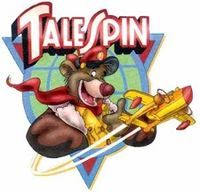
7.) TaleSpin (1990-1991): For the most part, it's easy to draw the lines that connect the Disney Afternoon's initial shows to the pre-existing Disney properties they're based on. "Goof Troop" is really just those old-school Goofy shorts about domestic life updated to match with 90's-style family sitcoms, "Chip 'n' Dale: Rescue Rangers" plugs the titular duo into kid-friendly adventure romps, and so on and so forth. But "TaleSpin" is just so weird in that respect: it may borrow three of its key characters from there, but it can't really be said to be based on Disney's 1967 version of "The Jungle Book". Instead, those characters-or rather heavily modified versions of those characters re-conceived to fit in to the show's new setting-are placed into an entirely new world, which itself is something like a steampunk fantasy version of 1920's America, guided by the spirit of old-school Adventure Serials. But the very oddity of its construction allows "TaleSpin" to feel at once familiar and new, able to ground itself by way of those "Jungle Book" characters you know and love (with the twists it puts on them being endearingly clever, like making Shere Khan a Lex Luthor-style corporate mogul) while also spring-boarding out into a wide variety of classic adventure stories. Daring duels with pirates, high-stakes air races, and even the occasional flight of overtly-magical fancy...there's a lot of Tales to Spin here, and the show consistently does so with an admirably clear-eyed sense of its own genre and how to best play with it. And again, it's all connected to a charming cast of characters. "TaleSpin" is a tricky little thing to pin down, then, but for that very reason it's way too memorable to overlook or ever forget.
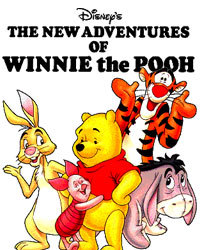
6.) The New Adventures of Winnie the Pooh (1988-1991): "Winnie the Pooh" stories are a tricky thing to do right. They'd been around for close to half-a-century even back when Disney first adapted the property into a trilogy of animated short films during the mid-to-late 60's, and that history, combined with the stories' enduring popularity, means we all have a fairly solid idea of what they "feel" like. Moreover, by their very nature, the best "Pooh" stories are short, simple things with only the barest hint of narrative intent or moral center. Which means trying to expand on them in any significant way runs the risk of stuffing them with more familiar story-telling tropes and styles that simply do not belong there. So "The New Adventures of Winnie the Pooh" deserves a lot of credit, if not for dodging that fact entirely (as was increasingly common in kid's TV shows of the time, it made sure to center a lot of its stories around "lessons" in a fashion much louder and more overt than the source material), then at least for managing to make a show that consistently felt like it captured and exemplified the right spirit even so. A lot of that, it should be said, comes down to the voice actors; not only did Paul Winchell (Tigger) and John Fiedler (Piglet) return to reprise their iconic roles after having sat out the previous "Pooh" TV show, "Welcome to Pooh Corner", but this also marks the first "Pooh" project where the title character is voiced by Jim Cummings, who has played the role in every other "Pooh" production to come out of Disney in the nearly-three decades since. Their performances aren't just consistently entertaining, they also lend a sense of spiritual continuity that benefits the show greatly. More to the point, though, the animation has an intriguing physicality to it that recognizes the stuffed-animal nature of its core cast, as well as a delightfully-poppy color scheme. The writing, meanwhile, uses a particular blend of sweetness and humor that feels at once akin to the original Disney short films, but also distinct and enjoyable unto itself. Wordplay, slapstick, and gentle philosophizing, hallmarks of a good "Pooh" story since the very beginning, all show up in "The New Adventures of Winnie the Pooh", but the show always puts a just-so slightly-modern touch on each one. To be sure, "New Adventures" plays in the same ballpark as more typical Saturday Morning cartoon fare, but it does so with the invaluable lessons of Pooh himself pretty clearly having been taken to heart in the process, and the resulting show is simply delightful.

5.) Adventures of the Gummi Bears (1985-1991): Technically speaking, the first Disney Television series is the short-lived plush-toy spin-off "The Wuzzles". Meanwhile, the first real breakout hit for the studio was unquestionably 1987's "Ducktales". But the one that first really established the studio, granting it the foothold from which it would build its future successes, is "The Adventures of the Gummi Bears". On paper, it sounds very much like a "Smurfs" wanna-be, centered as it is on a tribe of small, magically-inclined creatures with matching names set in a vaguely-Medieval England fantasy world. But in execution, it winds up weaving a remarkably-compelling tale with a surprisingly-dense internal mythology which it treats with an impressive degree of respect and earnestness. That isn't to say it's some Super Serious Epic (we'll need to go a bit up the list for that show), but even as it keeps things primarily centered on kid-friendly slapstick and gentle goofing off (and does a fine version of it in both cases too), there is nonetheless an underlying spine of genuinely weighty world-building to it that adds just the right amount of extra heft to even the lighter aspects of the series. The way our main characters, the Gummi Bears of the title, slowly but surely discover more and more aspects of their history and culture (much of it tangled up in an ugly war stemming from prejudice and distrust), all the while hoping for the day they'll be able to reunite with their own people, underlines almost every episode, pulling you in and often taking you by surprise. As well, while all clearly archetypal (in the old Seven Dwarves tradition of being named for their defining traits, even), those characters are all delightful to spend time with, again thanks to a strong cast of voice-acting veterans like Paul Winchell, June Foray, and Bill Scott, and a dynamic that feels warm and lived-in. Moreover, this is the show that Disney's TV animation really used to show off its skills, with some of the most fluid, engaging use of motion in any cartoon of the era; some episode are naturally stronger than others, but the best of them are genuinely gorgeous stuff. It is, in other words, a show with an intriguing story that feels very much like the best sort of Bed-Time Story, inviting and friendly on one level but with a deeper center just beneath the surface to pull you in and keep you coming back, and realized with a strong, compelling craft. So it's really no wonder that these "Gummi Bears" were, in their way, the ones to start the long-lived legacy of Disney's TV cartoons.

4.) Recess (1997-2003): There came an interesting point of transition for Disney's TV animation studios toward the end of the 90's. The Disney Afternoon block, long the most visible home for their shows, was finally shutting down after a solid seven-year run, and a new once-a-week block, fittingly named "1 Saturday Morning", was rising up to take its place. The block managed to last a decent five years, but very few of its shows managed to make much of an impact. But among the ones that did, the clear front-runner, to my mind at least, is "Recess", a love letter aimed not only at the nostalgia of the playground but also to the iconic TV comedy "Hogan's Heroes" (compare the theme songs to both shows, and then look at the mix of archetypes that comprises the core cast for each one). That mixture allows the show to present a vision of childhood that is simultaneously deliberately hyperbolic-the age-old notion of schoolyard hierarchies is here portrayed as a rich, thriving society unto itself, complete with its own king and economy-while still grounded in relatable ideas and characters, especially as regards the oftentimes contentious relationship between the students and teachers. That latter aspect especially speaks to why "Recess" is probably my pick for the best overall show of the "1 Saturday Morning" era, too; yes, as is typical of a show aimed at kids, it plays to their own feelings by painting the teachers as alternatively cruel and inept for the most part (while quite a few episodes focus on the difficulties the kids have with their parents, too), but it never forgets their own humanity in the process, and some of the show's best moments stem from that fact. Still, at the end of the day, it does really come down to that "Hogan's Heroes" influence I mentioned. No real kid has ever assembled the complex schemes and adventures that are "Recess"' primary source of stories, but I promise you every last kid has dreamed of it, and by placing those scenarios in the world it does, where the audience can at once recognize how much this is an exaggeration but still grasp what reality it draws from, it makes this really intriguing atmosphere that sparkles at once with a kid's sense of wonder and an adult's sense of humor (a lot of the best jokes stem from sharp wit that connects a young adult's perspective to adult concepts like a full-time job or balancing responsibilities). It's a style quite a few shows, cartoon or otherwise, have tried out over the years, but "Recess" is one of the very best examples of the form.
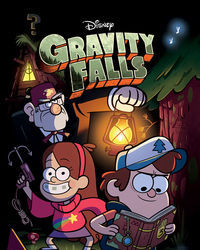
3a.) Gravity Falls (2012-2016): If you were paying close enough attention, you may have noticed something about the opening credits of animated television shows around the beginning of the '00's: series creators were being prominently credited. It was indicative of a larger amount of trust and control being placed in distinct creative voices as the industry slowly eased out (or tried to, anyway) of the merchandise-driven business model that had defined it for most of the 80's and 90's, and across the board it led to some very distinct visions making their way onto screens. For Disney, the example du jour is Alex Hirsch's "Gravity Falls", a show whose existence is all the more surprising when you consider just how very Not Disney its premise-kid-oriented "Twin Peaks" riff by way of "The X-Files"-really sounds. And yet here we are, with a show that is at once a razor-sharp comedy, a poignant examination of what it means to grow up and what we do and do not have to leave behind in the process, and a veritable parade of some of the most off-the-wall horror-sci-if-fantasy mash-ups of all time. And the thing of it is, the glue holding all of that together and keeping it coherent, allowing the show to build effortlessly both towards fantastic punchlines and deeply emotional culminations, stems from Hirsch: in interviews, he talked about how much of the show's premise stemmed from reflecting on the tourist-trap vacations he himself took as a child, and indeed, a lot of the series' best moments (an early episode centered on a haunted convenience store springs to mind in particular for me) succeed by tapping into that particular vein of childhood, where the simple change in environment that comes with vacation lends even the most mundane things an air of mystery. By the same token, so too do the characters feel keenly drawn from reality (even as they do still possess a cartoon's foibles and exaggerations); Dipper and Mabel are two of the most believable pre-teens I've ever seen on TV, both in their own way smart enough to no longer be children but struggling with the greater maturity necessary to really become grown-up, Grunkle Stan feels like every huckster you've ever seen on TV right down to the niggling sense that there is a tremendous amount more to him than what we see, and the change in perspective the show gives us on Wendy, initially kept at arm's length because of Dipper's crush on her only to emerge more fully as a person once he recognizes her own feelings on the matter. And then on top of all that, it's connected to a genuinely-compelling mystery that the show gradually teases out more and more, and those who are paying attention really do have an honest shot of piecing the puzzle together before the characters do, adding a new layer of visceral excitement to the experience. But the real strength of the show is that those twists and turns, as much as they might pull us deeper into the puzzle box, are really more about exploring and growing the characters first and foremost. That's the key to "Gravity Falls" above all, to my mind: yes, its internal mythology is uniquely well built, and yes, pushing the envelope on how genuinely scary/dangerous it's allowed to get is fascinating, but it never loses sight of how much its characters are the real heart of the story, and how much that fact helps this weird, wild mixture really come together.

3b.) Darkwing Duck (1991-1992): Yes, the #3 slot is a draw, because when it came right down to it I simply could not pick between the two shows I was considering for it. Leaving "Gravity Falls" off felt simply unacceptable to be, but neither could I find it in my heart to axe this, maybe my personal favorite of the entire Disney Afternoon era, from the list. Because the thing of it is, when you really think about it, "Darkwing Duck" shouldn't work at all. Superhero parodies were old hat even by the early 90's (indeed, at that point they probably outnumbered actual superhero shows), while spin-offs had long ago developed a reputation for being cheap-and-easy cash-ins (though the extent to which "Darkwing Duck" is, in fact, a spin-off of "Ducktales" is a touch debatable, I suppose, even as they share a handful of characters). But despite the odds against it, "Darkwing Duck" does indeed prove to be a consistently entertaining piece of work, and a lot of why boils down to the remarkably-multilayered construction of its title character. That isn't to say Darkwing is the only good thing about his own show; his rogue's gallery is an amusing assortment of pastiches of classic Villain archetypes-the plant-master, the crazy clown, the evil double, and so on-while the supporting cast, including "Ducktales" veteran Launchpad McQuack and excitable youngster Gosalyn Mallard (a character who, by rights, should be insufferable, but is instead genuinely endearing thanks in no small part to her voice actor, the late, great Christine Cavanaugh), is equally enjoyable. As well, the show's sense of humor has an ahead-of-its-time sardonic edge to it that was nowhere near as commonplace in kid's cartoons by that point, but which here provides just the right level of sharpness to the comedy. And the animation is fascinating, too, with a far more "Looney Tunes"-style sensibility to a lot of its best moments (which in turn informs the characters a lot; there's more than a touch of Daffy to Darkwing, but we'll get to that in a minute), while also showing just how far the iconic Disney "duck" design could be stretched while still being recognizable. But it really is Darkwing himself who makes the show, because despite the core conceit being fairly simple-poking fun at the inherent egomania of the superhero by portraying one as a glory hound interested more in publicity than actual heroism-there actually prove to be quite a few layers to him when you really get into it. For one thing, he's actually quite good at his job; for as many times as his inadequacy is the butt of the joke, "let's get dangerous" is more than just a catchphrase; it's a sign he's about to show you what he's really capable of. For another, his sincere affection for and protectiveness of Gosalyn shows there really is a heart underneath all that bluster, and that if he could just get out of his own way, Darkwing might well be capable of true greatness. But all too often he is, in fact, his own worst enemy (there's that Daffy Duck influence again). It's all played mostly for laughs, sure, but, especially thanks to Darkwing's VA Jim Cummings, who navigates each of those layers coherently and effectively, it comes through clearly even so. And it elevates the entire show to this unique, interesting place that has helped it stand the test of time.

2.) Gargoyles (1994-1997): As established during our introduction, the entry of Disney into the world of television animation in the mid-80's was a real paradigm shift in the industry. But a few years later, in 1992, came another, arguably even more profound game-changer: "Batman: The Animated Series". Every last element of that show-its writing, its visual style, and especially its revolutionary craft-proved profoundly popular, not only with viewers but people inside the industry. Soon enough, almost every TV animation studio around mounted a response: for Marvel Television, it was the "X-Men" cartoon, for Hanna Barbera it was "SWAT Kats". But far and away the best answer came from Disney, in the form of Greg Weisman's fantasy epic, "Gargoyles". From stem to stern, this is maybe one of the richest, most satisfying stories Disney TV ever crafted, and in stark contrast to just about every other show on this list, that doesn't come with a "but it's not as serious as all that" caveat. There's comic relief, to be sure, but still, this is nonetheless an entirely-earnest Modern Fantasy Epic, comprised of equal parts deep-cut cultural/mythological references-everything from Shakespeare to Arthurian Lore to the tales of Anansi the Spider, all realized with a remarkable degree of understanding and specificity-and exceptionally well-structured characters. Stoic Goliath, striving at once to protect what little remains of his kind while also seeking to do good in a world he struggles to understand; Elisa Maza, a sharp-minded detective who is always determined to stay on top of the situation no matter how crazy it becomes; Demona, a tragic figure consumed with anger and grief who seeks greater and greater means of destruction; Xanatos, one of the greatest masterminds of all time, always one step ahead, always a new scheme at the ready. "Gargoyles", in other words, weaves an impressively intricate tale that inhabits a sprawling, detailed world with rich, compelling players, by way of some of the most impressively-intricate long-term story arcs I've ever seen in a cartoon show. Whether it's the gradual transformation of Xanatos from inscrutable antagonist to complex Family Man (even as the extent to which he can ever really be trusted remains in question) or the slow-burn, exceptionally rewarding progression of Goliath and Elisa's relationship, or even things like the young, impetuous Brooklyn slowly growing up into a possible leader, "Gargoyles" hones in with perfect precision on how best to expand these characters over time. Likewise, watching as the scope of the world, and our own understanding of it, expands to include concepts like aliens and mutants amongst its gods and monsters is impressive and fascinating. And the series paces itself equally perfectly. There is a genuinely organic quality to "Gargoyles"' arcs, both character and plot; it never feels static or overly obsessed with the Status Quo, but it also does not rush through anything. Each plot twist, each character epiphany, feels earned, and all the more powerful as a result. And, cherry on top, the animation is top-tier stuff; it is perhaps not as overtly stylized as "Batman: The Animated Series" (though its focus on night-time settings and a darker color palette feels evocative of that show), but the combination of a Disney-esque sense of character design with the show's strong narrative backbone leads to exceptional results even so. "Gargoyles" may have been made in "Batman"'s image, but it wound up being a one-of-a-kind classic in its own right.
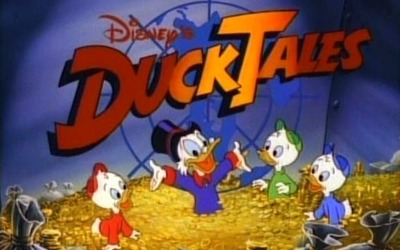
1.) Ducktales (1987-1990): There are a number of reasons "Ducktales" more or less has to top this list. Its pedigree, for one thing; drawing a lot of its premise (and directly adapting several of its best episodes and story lines) from the famed Carl Barks "Uncle Scrooge" comics (though notoriously, Barks' most famous successor, Don Rosa, has a less-than-sunny attitude toward the show) provides the show an exceptionally well-built and endearing structure. Whether it's outer-space epics or intercontinental treasure hunts, espionage action or magical mayhem, there's no breed of adventure "Ducktales" cannot comfortably tap into. Another thing to consider is its place in history; almost every other show on this list owes its existence to one degree or another to this show, which proved to be exactly the sort of powerhouse success story the Disney TV studio needed in order to prove its chops, and that means "Ducktales" holds a special place in animation history too, given how much Disney TV has played a part in it as a whole. And naturally, there's the animation to consider too; it may seem a touch standard-issue today, but compare "Ducktales" to just about any other contemporary cartoon of its era, and you'll realize just how much care goes into keeping characters on model and letting them movie not just fluidly, but also in a way that's enjoyable to watch. And last but hardly least, there's the stellar cast of characters (and voice actors); Huey, Dewey, and Louie may all be interchangeable, but their dynamic is lively and enjoyable anyway. Webby, meanwhile, is a fantastic foil, not only for them, but for Uncle Scrooge. And naturally, Scrooge himself (given an iconic performance by the late, great Alan Young) is just fantastic, a multi-layered, larger-than-life character who is nonetheless so much fun to simply spend time with you never want to stop. But the thing of it is, "Ducktales"' real claim to #1 is a bit harder to quantify than all that, because even as it excels on just about every level, it doesn't have, say, the same depth of theme and character as "Gravity Falls", or "Gargoyles"' tapestry of plot lines and character arcs. Its animation is certainly high quality, especially for the time, but it's not that much better than "Adventures of the Gummi Bears". And yet, even so, "Ducktales" is the one everyone remembers, and I feel like that comes down to it adding up to something more than just the sum of its parts. There really is this unique, ineffable energy to "Ducktales" that is equal parts charming, endearing, exciting, and thrilling, and it enhances each and every one of the things the show already does so well to a special level all its own. Some of that can be chalked up to nostalgia, sure, but a lot of it, I think, can also be ascribed to the sheer sense of discovery innate to the show. Not simply in the various people and places our heroes encounter (though there's that too, naturally), but in the fact that this new effort on Disney's part was hitting its stride, and in so doing opening up a whole new world of possibilities, for the show itself and for the future. Which is maybe being a touch too grandiose about it, but even so, "Ducktales" has endured enough to make me think there may be something to it. And hey, if literally nothing else, it really does have one humdinger of a theme song.
18 notes
·
View notes
Text
MA Fashion and Textile Practices Major Project Path - 5th September
Punk and Vivienne Westwood
The punk scene in both the UK and America was of course to continue long after the demise of the Sex Pistols, they were just the catalyst to project the punk sound into the mainstream. In the US bands such as; The Stimulators, Bad Brains - significant for being the first all black punk band, Black Flag - my brothers favourite band, Dead Kennedy’s, Agnostic Front, Minor Threat and more had all drawn inspiration from the like of Iggy Pop and The Stooges, the Ramones and the Sex Pistols and carried punk forward into the future. Bands like Nirvana, Rage Against the Machine and Green Day are bands we know today because they were inspired by those earlier punk pioneers. Billy Joe Armstrong (2010), lead singer of Green Day spoke to Rolling Stone magazine about the Sex Pistols impact on him as a writer:
“The Sex Pistols released just one album … but it punched a huge hole in everything that was bulls*** about rock music, and everything that was going wrong with the world, too, no one else has had that kind of impact with one album. Never Mind the Bollocks is the root of everything that goes on at modern-rock radio. It’s just an amazing thing that no one’s been able to live up to.”
In the UK The Clash and The Damned continued with chart success’s and other bands grew from punks influence such as; Joy Division, Siouxsie and the Banshees - who had been around for some years but were now getting noticed, The Cure, The Fall, Caberet Voltaire and many more. The sound was categorised as alternative and independent music. Johnny Rotten himself was soon to fall foul of Malcolm McLaren who left him stranded in San Francisco without money or a flight home, McLaren was off to forge his own career in pop and to manage other bands such as Adam and the Ants and Bow Wow Wow - both of which were dressed by Vivienne Westwood. Eventually finding his way home to London, Rotten formed his own band called Public Image Ltd, a sarcastic reference to the media machine that McLaren had so desperately pushed the Sex Pistols towards.
youtube
Public Image Ltd [PiL Official, Public Image Ltd]. (2013, Oct 10). Public Image Limited - This Is Not A Love Song (Official Video) [Video file]. Retrieved from https://www.youtube.com/watch?v=Az_GCJnXAI0
Malcolm was to go on and achieve relative chart success with songs such as ‘Buffalo Gals’, ‘Double Dutch’ and ‘Madame Butterfly’ which is one of my favourite songs. Growing up in the 80′s I had no idea who Malcolm McLaren was but I liked the songs he produced. His sound had taken influences from hip hop culture and electronic sounds and mixed them together, much like his attitude towards collaboration amongst bands in his punk days. I get the impression from my research that he wasn’t well liked on the punk scene, The Damned lead vocalist Dave Vanian (2019) once described him as “a Fagin type character”, and we all know how Johnny Rotten felt about him before and after the end of the Sex Pistols. He doesn’t come across as overly likable, but you cannot deny his ability to see the potential in people and the way he utilised his instinct for business.
youtube
Malcolm McLaren [Sherry Wallace]. (2012, Dec 22). "madam butterfly" malcolm mclaren [Video file]. Retrieved from https://www.youtube.com/watch?v=3JN8o8-ZK5s
After the breakup of the Sex Pistols in 1978, Vivienne Westwood had already renamed her and McLaren’s shop SEX on The Kings Road to Seditionaires, and had been selling clothing inspired by fetish and bondage clothing into wearable fashion, utilising zips, pins and straps within her designs. This of course was a huge hit with the punk youth and bands McLaren adorned. In 1980 Vivienne was left disenchanted with the collapse of punk in the UK and renamed the shop Worlds End, as that’s how it must have appeared to be. This name was to be the last incarnation of the shop and is still called Worlds End today.

Westwood, V. (1977). Anarchist Punk Gang – The 1% ers shirt from Seditionaries,1977. [Clothing]. Retrieved from https://www.metmuseum.org/art/collection/search/185218.
In 1981 Westwood and McLaren showed their work for the first time on the major catwalks, this was The Pirate Collection based on a romanticised vision of the pirate. This look was to be seminal in the New Romantic aesthetic, showcased especially by bands such as Visage and Adam and the Ants. Vivienne pioneered her own cutting techniques based on rectangles and taking inspiration from historical cuts. She would make a toile of the garment in smaller scale on a reduced sized dummy, once the fit was correct it was then scaled it up to actual size. Throughout the 80′s Westwood continued to be inspired by different cultures and times, her collection in SS'82 was Buffalo Girls, in AW that year it was Peruvian women, SS’83 was Blade Runner and so on. It was to be what she called her Pagan years. By 1984 her collaboration with Malcolm McLaren had ceased.
Westwood had been with McLaren since her break up from her first husband Derek in 1965. She already had son Ben, whom she’d had with Derek when they moved into a flat in Clapham. They then went on to have son Joseph together in 1967. Prior to meeting Derek she had been a primary school teacher and had made her own jewellery, which she sold on a stall on Portobello Road. Westwood has said that although he was a driving force behind her, she felt he was controlling. Westwood (2014) said of their meeting;
“Malcolm chased me, I didn’t want him for my boyfriend. He didn’t look after himself. And I started trying to cook for him a bit and stuff like that. And, well, that’s how it started. The point is, I didn’t want Malcolm at first, but I did, in fact, end up getting pregnant by him, even then, I didn’t really want him."

Westwood, V. (1977). The Pirate Collection. [Clothing]. Retrieved from https://blog.viviennewestwood.com/the-story-so-far/.
In the late 80′s Westwood’s style changed again, this time her girls were seen sporting fashion which parodied the upper classes. Westwood’s 1987 Harris Tweed collection was inspired by a young ballet dancer she had spotted on the tube wearing her hair up in a plaited bun, ballet shoes in bag and wearing a Harris Tweed jacket. For this collection she used fine wool tweeds and velvet’s - fabrics that the aristocracy would have used. This air of luxury continued to be a feature throughout most of her collections in the 80′s, her signature corsets becoming pieces to aspire to. Her model muse at the time was Sara Stockbridge who had the perfect look to carry Vivienne’s signature aesthetic. I always remember the cover of I-D magazine Sara was on, she was just so quirky and different compared to other models at the time.
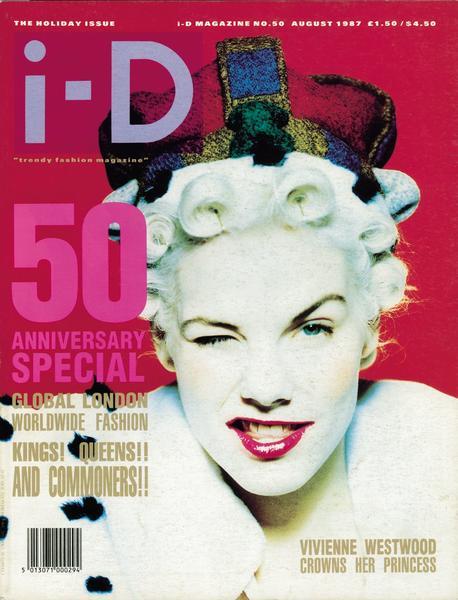
I-D Magazine, n.d. (1987). Sara Stockbridge 50th Anniversary Issue. [Editorial]. Retrieved from https://www.brennan-and-burch.co.uk/blogs/b-and-b-blog/45795267-sara-stockbridge-iconic-muse-of-an-era.
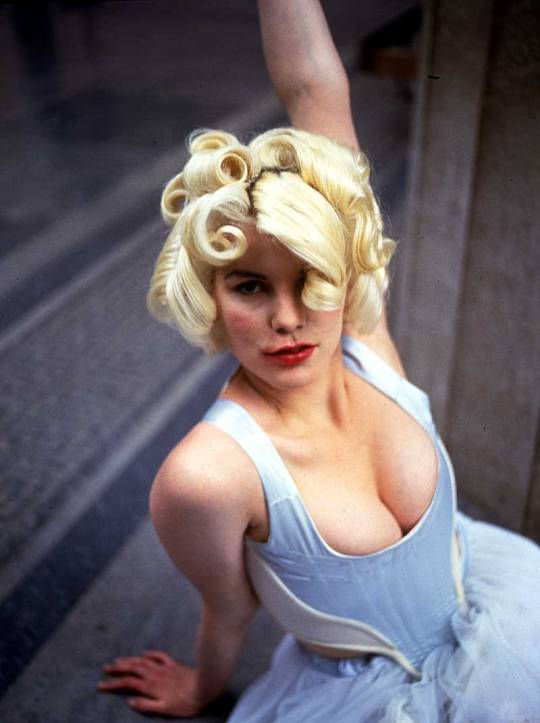
Ryan, D. (1987). Harris Tweed Collection. [Photograph]. Retrieved from http://worldsendshop.co.uk/lips-print/.
The 90′s decade sees her Anglomania years, Westwood’s take on the connection in fashion between the UK and France. She said (1993) of the collection:
“On the English side we have tailoring and an easy charm, on the French side that solidity of design and proportion that comes from never being satisfied because something can always be done to make it better, more refined.”
She took inspiration from Gainsborough’s paintings, country charm and France’s obsession with English tailoring. And in the winter of that year she went all out for tartan - a look we probably most associate with Westwood’s post punk collections. The collection was created in conjunction with her new husband Andreas Kronthaler. They had met previously in 1988 when Westwood was teaching for Fashion Design at the Vienna School of Applied Art. He moved to London to work for her company in 1989, and their first joint collection was the Cut and Slash collection in SS’1991. They married in 1993 and have been married ever since. Whilst he is essentially a silent partner in her business she has since acknowledged him as a major contributor to her Gold Collection for the last 25 years.

Westwood, V. (1993). Andreas Kronthaler for Vivienne Westwood. [Photograph]. Retrieved from https://www.vogue.com/fashion-shows/fall-1993-ready-to-wear/andreas-kronthaler-for-vivienne-westwood.
From 2000 to present Westwood has concentrated on what she calls her Exploration years. She has been fascinated by the properties of different fabrics and what they can bring to her designs, one has fed the other, she has been treating fabric like a living entity. Since her early days on The Kings Road she has been incredibly successful as a designer. She has 12 Vivienne Westwood stores in the UK and another 63 outlets worldwide, as well as a comprehensive e commerce website.
Of late Vivienne has become concerned about the sustainability of her fashion business and ‘fast fashion’ within the fashion industry as a whole. Her new mantra is ‘quality not quantity’ and has no qualms about using her name as leverage to get ethical fashion into the mainstream. In 2014 she put a halt on expanding her business further - despite her business in China doing so well - to concentrate on seeing how her own business was effecting the environment and to work hard to ensure that her own standards of sustainability were met. Westwood (2014) said of this decision:
“Do I feel guilty about all the consumption that the fashion world promotes? Well, I can answer that by saying that I am now trying to make my own business more efficient and self-sustaining. This also means trying to make everybody who works in it happy, if I can."
That same year she launched her ‘Save The Arctic Campaign’ which featured no less than 60 celebrities sporting a specially designed T-Shirt with all proceeds of the sale going towards the charity and climate activists Greenpeace. The campaign featured celebrities such as George Clooney, Chris Martin, Grayson Perry, Kate Moss to name but a few, who were photographed by award-winning celebrity photographer Andy Gotts. Vivienne, along with some of the celebrities traveled the London underground to promote the campaign, and were pictured on the long escalators - lined with the remaining celebrity photographs - which lead up to the main head quarters of Shell Oil.

Gotts, A. (2014). Paloma Faith Save The Arctic. [Photograph]. Retrieved from https://www.viviennewestwood.com/en/westwood-world/save-the-artic-campaign/.

Zimbio, n.d. (2015). Vivienne Westwood, Sadie Frost, Leebo Freeman and Andy Gotts attend the Save The Arctic Collection launch at Waterloo Station on July 13, 2015 in London, England.. [Photograph]. Retrieved from http://www.zimbio.com/photos/Vivienne+Westwood/Andy+Gotts/Save+Arctic+Collection+Launch+Photocall/57Ugwti3R73.
The T-Shirt design featured a heart shaped globe with a flag marking the Arctic region. Vivienne (2014) felt the help of celebrities was beneficial to the campaign:
“Andy is popular with celebrities because he makes it all a pleasant experience. I also really relied on the help of Jerry Hall and Georgia May to do this. Celebrities are often the key to getting a message across, public opinion is very responsive to celebrity.”
The logo for Save The Arctic was also used to launch her SS’14 Gold Label collection show. The campaign has gone part way in ending Shell Oil’s interest on the area. After three years of constant campaigning by Greenpeace and with the support of over 7 million people, Shell Oil have quit drilling in the Arctic. There is still has a long way to go before the pressure is off this magnificent region, which supports human life and animal life not found anywhere else on Earth.
Westwood wasn’t content to leave campaign there however, and in 2019 at London fashion week John Sauven, executive director of Greenpeace UK, along with Vivienne herself took to the catwalk to conduct a climate protest catwalk spectacular. London fashion week was the ideal platform for Westwood, already a seasoned fashion aficionado and Greenpeace to push the need for large fashion brands to start taking sustainability and climate change into consideration, before it’s too late. John Sauven referenced Greta Thunberg - the school girl who made a stand against climate change by sitting outside the parliament building in Sweden, but then had the incredible support of 1.5 million school children around the world when on the 15th March came out of their schools in support of her. Sauven (2019) said of her actions:
"Greta is that shy girl sitting at the back of the classroom, she’s not a leader, she doesn’t see herself in that way. She sees herself as a very shy, quiet girl who doesn’t usually say very much. And you think, wow, that’s immense power, and it gives you immense hope. You need all these different types of people to create change. The people that shout the loudest, they maybe aren’t the people you’re going to see coming forward in the next generation.”
In the last few years Vivienne Westwood has concentrated more on using her fashion and status for campaigning and activism. She has gone on to look at how businesses can reform their policies, looking at climate ecology, looking at the effect of fracking and supporting to anti-fracking campaigns, and giving support to Cool Earth - a charity which helps indigenous communities to halt deforestation. She has her own Climate Revolution website which she fills with information on her campaigning and current fashion related items. She often designs T-Shirt graphics and donates the designs to be used by charities, her latest T-Shirt is for the charity magazine Big Issue. Here Vivienne (2019) explains her reasoning why her new Tao T-Shirt is priced at £120:
youtube
Vivienne Westwood [Vivienne Westwood]. (2019, Aug 19). IoU - Cotton and the Fashion Industry [Video file]. Retrieved from https://www.youtube.com/watch?v=evSoIaootlE
I totally support Vivienne’s attitude on why we should be paying more for our fashion - paying more and buying less. I had to think about the last time I actually bought something new, most of my purchases are from eBay or charity shops, being poor certainly helps you budget for fashion! I also love her mantra of ‘Buy well, choose well and make it last’, which applies to us as the consumer and also to fashion industry brands who need to look at the materials they are using and the way they are manufacturing their products. £120 is a lot for a T-Shirt but I can see the reasoning behind the price tag, you are paying for a more sustainable product which should have the longevity to be worn for many years, and the skilled workers who are paid fair wages to make it. As well as the proceeds going towards the Big Issue - a charity which has helped homeless people in the UK for many years.

The Big Issue, n.d. (2019). Vivienne Westwood's exclusive design just for The Big Issue is available from her store for £120 with all proceeds going to The Big Issue. [Fashion]. Retrieved from https://www.bigissue.com/latest/why-vivienne-westwood-collaborated-with-the-big-issue-on-a-limited-edition-t-shirt/.
The T-Shirt is really nice actually, it’s a call to the younger generation to build their characters, because it’s their characters which shape them as human beings, they are the ones who are going to create the future. I based my practice work on Vivienne’s Climate Revolution T-Shirt because I liked the simple sleeveless shape and raw edges, clearly based around the use of the rectangle that she has used in many of her collections.
Vivienne Westwood has always used the T-Shirt as the affordable and accessible way of buying her fashion, as with many high fashion designers, it is the one product which enables the consumer to purchase a piece of them. It’s the one product which is wearable by so many, it’s a unisex item which appeals to a broad range of people - and the more the merrier if it’s promoting a good cause.
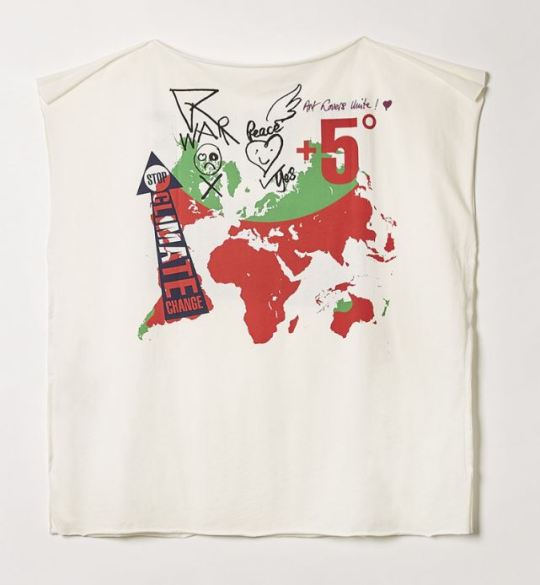
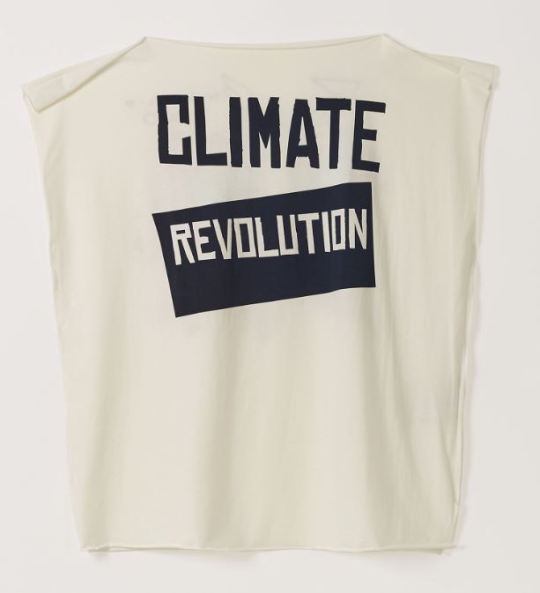
https://www.viviennewestwood.com/en/women/clothing/t-shirts/square-t-shirt-climate-revolution-white-nat-white-CLA305AW550168.html?cgid=women-clothing-tshirts#page=1&start=5
Vivienne Westwood became a Dame in 1992 when she received her OBE from Queen Elizabeth II. Always the one to make a statement, she went commando to the awards ceremony and apparently forgot her lack of underwear when twirling in her skirt for the photographers! Making a statement has been a way of life for Vivienne Westwood, from her early designs in her shop Let It Rock and then SEX to showing her support for numerous campaigns as a charity activist - she is the ultimate fashion queen of punk and long may she reign!

The Big Issue, n.d. (2019). Vivienne Westwood is making a fashion statement with the Big Issue. [Editorial]. Retrieved from http://climaterevolution.co.uk/wp/hero-post/vivienne-westwood-is-making-a-fashion-statement-with-the-big-issue/.
Websites:
Pavarini, M.C. (2014). Vivienne Westwood designs logo for Greenpeace. Retrieved from https://www.sportswear-international.com/news/stories/Vivienne-Westwood-designs-logo-for-Greenpeace-7945.
Thorpe, V. (2014). Vivienne Westwood: climate change, not fashion, is now my priority. Retrieved from https://www.theguardian.com/lifeandstyle/2014/feb/08/vivienne-westwood-arctic-campaign.
Alexander, E. (2014). Vivienne Westwood 'didn’t want' to have a relationship with Malcolm McLaren: 'I thought that maybe he’d got the wrong idea and it was my fault. Retrieved from https://www.independent.co.uk/news/people/vivienne-westwood-didn-t-want-to-have-a-relationship-with-malcolm-mclaren-i-thought-that-maybe-he-d-9746980.html.
Westwood, V. (n.d). The story so far. Retrieved from https://blog.viviennewestwood.com/the-story-so-far/.
Westwood, V. (n.d). Climate Revolution. Retrieved from http://climaterevolution.co.uk/wp/hero-post/vivienne-westwood-is-making-a-fashion-statement-with-the-big-issue/.
Hall, H. (2014). Vivienne Westwood launches star-studded Save the Arctic Campaign. Retrieved from https://www.stylist.co.uk/life/vivienne-westwood-launches-star-studded-save-the-arctic-campaign-featuring-kate-moss-naomi-campbell-and-david-gandy/60901.
Whitehouse, M. (2019). vivienne westwood and greenpeace talk staying angry and finding hope. Retrieved from https://i-d.vice.com/en_uk/article/ywy4gg/vivienne-westwood-greenpeace-john-sauven-climate-crisis.
Whitmore, G. (2013). Vivienne Westwood: Her life and career so far - in pictures. Retrieved from Whitmore, G. (2013). Vivienne Westwood: Her life and career so far - in pictures. Retrieved from https://www.theguardian.com/lifeandstyle/gallery/2013/nov/30/vivienne-westwood-sexpistols.
Petrusich, A. (2016). Where Punk Rock Begins. Retrieved from https://www.newyorker.com/culture/cultural-comment/where-punk-rock-begins.
Chick, S. (2017). MC5 – 10 of the best. Retrieved from https://www.theguardian.com/music/2017/aug/17/mc5-10-of-the-best.
Uhelszki, J. (2018). MC5 on ‘Kick Out The Jams’: “We weren’t on a meth power trip… just a power trip”. Retrieved from https://www.uncut.co.uk/features/the-making-of-mc5-s-kick-out-the-jams-33061.
Gibson, C. (2016). What happened in Chicago in 1968, and why is everyone talking about it now?. Retrieved from https://www.washingtonpost.com/news/arts-and-entertainment/wp/2016/07/18/what-happened-in-chicago-in-1968-and-why-is-everyone-talking-about-it-now/?noredirect=on.
BBC News. (2018). 1968 Democratic National Convention: A 'week of hate'. Retrieved from https://www.bbc.co.uk/news/world-us-canada-45226132.
Ramone, M. (n.d). Marky Ramone. Retrieved from http://www.markyramone.com/biography/.
Rowley, S. (2017). The Damned: an epic tale of fast living and faster music. Retrieved from https://www.loudersound.com/features/the-damned-an-epic-tale-of-fast-living-and-faster-music.
Phillips, S. (2013). Robert Golden's best photograph: the 1976 Notting Hill carnival riots. Retrieved from https://www.theguardian.com/artanddesign/2013/mar/13/robert-golden-best-photograph.
Song Facts. (n.d). White Riot by The Clash. Retrieved from https://www.songfacts.com/facts/the-clash/white-riot.
Ward, O. (2019). British politics is (Johnny) rotten—no wonder punk music is making a comeback. Retrieved from https://www.prospectmagazine.co.uk/arts-and-books/british-politics-is-johnny-rotten-no-wonder-punk-music-is-making-a-comeback.
Lauderdale, B. (2015). A Brief Political History Of The United Kingdom. Retrieved from https://fivethirtyeight.com/features/a-brief-political-history-of-the-united-kingdom/.
BBC News. (2011). Smashed Hits: Is London Calling the best anthem for a city?. Retrieved from https://www.bbc.co.uk/news/magazine-14324385.
Welch, J. (2016). Sex Pistols: Anarchy in the UK and the tour they tried to ban. Retrieved from https://www.bbc.co.uk/news/uk-england-norfolk-38165091.
Serena, K. (2018). The Short, Tragic Romance Of Sid Vicious And Nancy Spungen. Retrieved from https://allthatsinteresting.com/nancy-spungen.
Alt Press. (2018). WAS THE SEX PISTOLS’ FIRST US TOUR AS DESTRUCTIVE AS REPORTS SAY?. Retrieved from https://www.altpress.com/features/sex_pistols_first_u-s-_tour_destructive_1978/.
Wawzenek, B. (2017). Influence and Infamy: How the Sex Pistols Impacted the Future of Music. Retrieved from https://diffuser.fm/sex-pistols-influence/.
Perry, A. (2018). The end of the Sex Pistols: how punk died 40 years ago today, and John Lydon rose from its ashes. Retrieved from https://www.telegraph.co.uk/music/what-to-listen-to/end-sex-pistols-punk-died-40-years-ago-today-john-lydon-rose/.
Documentaries:
Miller, J.J. , MacDonald, E. , Barbisan, J. , Tabata, S. (Writers) & Miller, J.J. (Director). (2019). Punk: Part 1 [Television series episode]. In D. Murray (Producer), Punk. Canada, North America: Sky Arts.
Miller, J.J. , MacDonald, E. , Barbisan, J. , Tabata, S. (Writers) & Miller, J.J. (Director). (2019). Punk: Part 2 [Television series episode]. In D. Murray (Producer), Punk. Canada, North America: Sky Arts.
Miller, J.J. , MacDonald, E. , Barbisan, J. , Tabata, S. (Writers) & Miller, J.J. (Director). (2019). Punk: Part 3 [Television series episode]. In D. Murray (Producer), Punk. Canada, North America: Sky Arts.
Miller, J.J. , MacDonald, E. , Barbisan, J. , Tabata, S. (Writers) & Miller, J.J. (Director). (2019). Punk: Part 4 [Television series episode]. In D. Murray (Producer), Punk. Canada, North America: Sky Arts.
0 notes